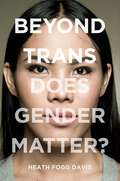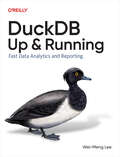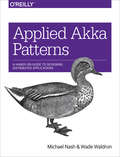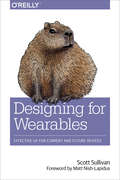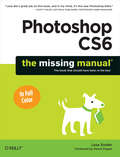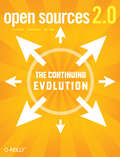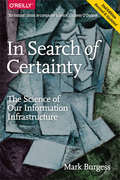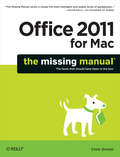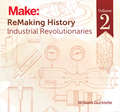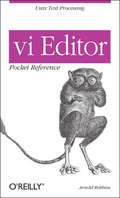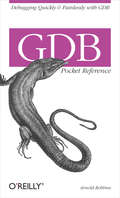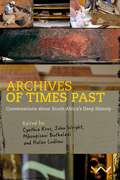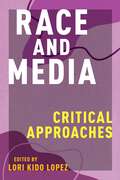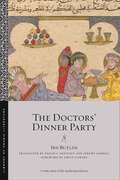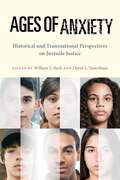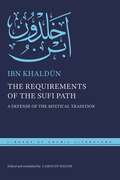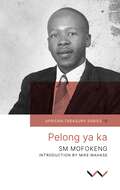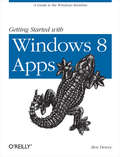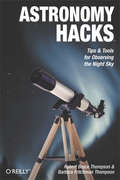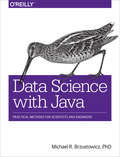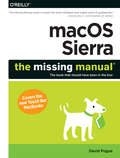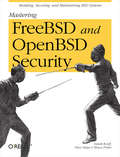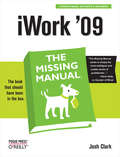- Table View
- List View
Beyond Trans: Does Gender Matter? (LGBTQ Politics #2)
by Heath Fogg DavisGoes beyond the category of transgender to question the need for gender classificationBeyond Trans pushes the conversation on gender identity to its limits: questioning the need for gender categories in the first place. Whether on birth certificates or college admissions applications or on bathroom doors, why do we need to mark people and places with sex categories? Do they serve a real purpose or are these places and forms just mechanisms of exclusion? Heath Fogg Davis offers an impassioned call to rethink the usefulness of dividing the world into not just Male and Female categories but even additional categories of Transgender and gender fluid. Davis, himself a transgender man, explores the underlying gender-enforcing policies and customs in American life that have led to transgender bathroom bills, college admissions controversies, and more, arguing that it is necessary for our society to take real steps to challenge the assumption that gender matters. He examines four areas where we need to re-think our sex-classification systems: sex-marked identity documents such as birth certificates, driver’s licenses and passports; sex-segregated public restrooms; single-sex colleges; and sex-segregated sports. Speaking from his own experience and drawing upon major cases of sex discrimination in the news and in the courts, Davis presents a persuasive case for challenging how individuals are classified according to sex and offers concrete recommendations for alleviating sex identity discrimination and sex-based disadvantage. For anyone in search of pragmatic ways to make our world more inclusive, Davis’ recommendations provide much-needed practical guidance about how to work through this complex issue. A provocative call to action, Beyond Trans pushes us to think how we can work to make America truly inclusive of all people.
DuckDB: Fast Data Analytics and Reporting
by Wei-Meng LeeDuckDB, an open source in-process database created for OLAP workloads, provides key advantages over more mainstream OLAP solutions: It's embeddable and optimized for analytics. It also integrates well with Python and is compatible with SQL, giving you the performance and flexibility of SQL right within your Python environment. This handy guide shows you how to get started with this versatile and powerful tool.Author Wei-Meng Lee takes developers and data professionals through DuckDB's primary features and functions, best practices, and practical examples of how you can use DuckDB for a variety of data analytics tasks. You'll also dive into specific topics, including how to import data into DuckDB, work with tables, perform exploratory data analysis, visualize data, perform spatial analysis, and use DuckDB with JSON files, Polars, and JupySQL.Understand the purpose of DuckDB and its main functionsConduct data analytics tasks using DuckDBIntegrate DuckDB with pandas, Polars, and JupySQLUse DuckDB to query your dataPerform spatial analytics using DuckDB's spatial extensionWork with a diverse range of data including Parquet, CSV, and JSON
Applied Akka Patterns: A Hands-On Guide to Designing Distributed Applications
by Michael Nash Wade WaldronWhen it comes to big data processing, we can no longer ignore concurrency or try to add it in after the fact. Fortunately, the solution is not a new paradigm of development, but rather an old one. With this hands-on guide, Java and Scala developers will learn how to embrace concurrent and distributed applications with the open source Akka toolkit. You’ll learn how to put the actor model and its associated patterns to immediate and practical use.Throughout the book, you’ll deal with an analogous workforce problem: how to schedule a group of people across a variety of projects while optimizing their time and skillsets. This example will help you understand how Akka uses actors, streams, and other tools to stitch your application together.Model software that reflects the real world with domain-driven designLearn principles and practices for implementing individual actorsUnlock the real potential of Akka with patterns for combining multiple actorsUnderstand the consistency tradeoffs in a distributed systemUse several Akka methods for isolating and dealing with failuresExplore ways to build systems that support availability and scalabilityTune your Akka application for performance with JVM tools and dispatchers
Designing for Wearables: Effective UX for Current and Future Devices
by Scott SullivanNow may be the perfect time to enter the wearables industry. With the range of products that have appeared in recent years, you can determine which ideas resonate with users and which don’t before leaping into the market. In this practical guide, author Scott Sullivan examines the current wearables ecosystem and then demonstrates the impact that service design in particular will have on these types of devices going forward.You’ll learn about the history and influence of activity trackers, smartwatches, wearable cameras, the controversial Google Glass experiment, and other devices that have come out of the recent Wild West period. This book also dives into many other aspects of wearables design, including tools for creating new products and methodologies for measuring their usefulness.You’ll explore:Emerging types of wearable technologiesHow to design services around wearable devicesKey concepts that govern service designPrototyping processes and tools such as Arduino and ProcessingThe importance of storytelling for introducing new wearablesHow wearables will change our relationship with computers
Photoshop CS6: The Missing Manual
by Lesa SniderPhotoshop CS6 is truly amazing, but it can also be overwhelming if you’re just getting started. This book makes learning Photoshop a breeze by explaining things in a friendly, conversational style—without technical jargon. After a thorough introduction to the program, you’ll delve deep into Photoshop’s secrets with expert tips and practical advice you can use every day.The important stuff you need to know:Learn your way around. Get a guided tour of Photoshop’s beautiful new workspace.Unlock the magic. Discover the most practical ways to use layers, channels, masks, paths, and other tools.Fine-tune your images. Learn techniques for cropping, retouching, and combining photos.Play with color. Drain, change, and add color; and create gorgeous black-and-whites and duotones.Be artistic. Create original illustrations and paintings, use text and filters effectively, and edit video clips.Share your work. Produce great-looking images for print and the Web.Work smarter and faster. Automate common chores and install plug-ins for complex tasks.
Open Sources 2.0: The Continuing Evolution
by Mark Stone Danese Cooper Chris DiBonaOpen Sources 2.0 is a collection of insightful and thought-provoking essays from today's technology leaders that continues painting the evolutionary picture that developed in the 1999 book Open Sources: Voices from the Revolution .These essays explore open source's impact on the software industry and reveal how open source concepts are infiltrating other areas of commerce and society. The essays appeal to a broad audience: the software developer will find thoughtful reflections on practices and methodology from leading open source developers like Jeremy Allison and Ben Laurie, while the business executive will find analyses of business strategies from the likes of Sleepycat co-founder and CEO Michael Olson and Open Source Business Conference founder Matt Asay.From China, Europe, India, and Brazil we get essays that describe the developing world's efforts to join the technology forefront and use open source to take control of its high tech destiny. For anyone with a strong interest in technology trends, these essays are a must-read.The enduring significance of open source goes well beyond high technology, however. At the heart of the new paradigm is network-enabled distributed collaboration: the growing impact of this model on all forms of online collaboration is fundamentally challenging our modern notion of community.What does the future hold? Veteran open source commentators Tim O'Reilly and Doc Searls offer their perspectives, as do leading open source scholars Steven Weber and Sonali Shah. Andrew Hessel traces the migration of open source ideas from computer technology to biotechnology, and Wikipedia co-founder Larry Sanger and Slashdot co-founder Jeff Bates provide frontline views of functioning, flourishing online collaborative communities.The power of collaboration, enabled by the internet and open source software, is changing the world in ways we can only begin to imagine.Open Sources 2.0 further develops the evolutionary picture that emerged in the original Open Sources and expounds on the transformative open source philosophy."This is a wonderful collection of thoughts and examples bygreat minds from the free software movement, and is a must have foranyone who follows free software development and project histories."--Robin Monks, Free Software MagazineThe list of contributors includeAlolita SharmaAndrew HesselBen LaurieBoon-Lock YeoBruno SouzaChris DiBonaDanese CooperDoc SearlsEugene KimGregorio RoblesIan MurdockJeff BatesJeremy AllisonJesus M. Gonzalez-BarahonaKim PoleseLarry SangerLouisa LiuMark StoneMark StoneMatthew N. AsayMichael OlsonMitchell BakerPamela JonesRobert AdkinsRuss NelsonSonali K. ShahStephen R. WalliSteven WeberSunil SaxenaTim O'ReillyWendy Seltzer
In Search of Certainty: The Science of Our Information Infrastructure
by Mark BurgessQuite soon, the world’s information infrastructure is going to reach a level of scale and complexity that will force scientists and engineers to approach it in an entirely new way. The familiar notions of command and control are being thwarted by realities of a faster, denser world of communication where choice, variety, and indeterminism rule. The myth of the machine that does exactly what we tell it has come to an end.What makes us think we can rely on all this technology? What keeps it together today, and how might it work tomorrow? Will we know how to build the next generation—or will we be lulled into a stupor of dependence brought about by its conveniences?In this book, Mark Burgess focuses on the impact of computers and information on our modern infrastructure by taking you from the roots of science to the principles behind system operation and design. To shape the future of technology, we need to understand how it works—or else what we don’t understand will end up shaping us.This book explores this subject in three parts:Part I, Stability: describes the fundamentals of predictability, and why we have to give up the idea of control in its classical meaningPart II, Certainty: describes the science of what we can know, when we don’t control everything, and how we make the best of life with only imperfect informationPart III, Promises: explains how the concepts of stability and certainty may be combined to approach information infrastructure as a new kind of virtual material, restoring a continuity to human-computer systems so that society can rely on them.
Office 2011 for Macintosh: The Missing Manual
by Chris GroverOffice 2011 for Mac is easy to use, but to unleash its full power, you need to go beyond the basics. This entertaining guide not only gets you started with Word, Excel, PowerPoint, and the new Outlook for Mac, it also reveals useful lots of things you didn't know the software could do. Get crystal-clear explanations on the features you use most -- and plenty of power-user tips when you're ready for more.Take advantage of new tools. Navigate with the Ribbon, use SmartArt graphics, and work online with Office Web Apps.Create professional-looking documents. Use Word to craft beautiful reports, newsletters, brochures, and posters.Crunch numbers with ease. Assemble data, make calculations, and summarize the results with Excel.Stay organized. Set up Outlook to track your email, contacts, appointments, and tasks.Make eye-catching presentations. Build PowerPoint slideshows with video and audio clips, animations, and other features.Use the programs together. Discover how to be more productive and creative by drawing directly in Word documents, adding spreadsheets to your slides, and more.
ReMaking History, Volume 2: Industrial Revolutionaries
by William GurstelleIndustrial Revolutionaries is the second volume in William Gurstelle's unique exploration of history's great inventors. Each chapter revisits the life and times of one of the forward-thinking revolutionaries who helped create the world we live in. You will not only learn about their great inventions, you'll also get step-by-step instructions for recreating them yourself. History will come to life as you have never experienced it before when you build it with your own hands. Inside this volume, you will discover:Joseph McKibben and the Air MuscleSquire Whipple and the Iron BridgeAbe Lincoln and the Campaign TorchSamuel Morse and the TelegraphJ.F. Daniell and the Storage BatteryBen Franklin and the Leyden JarCharles Goodyear and the Vulcanization of RubberBe sure to also check out ReMaking History, Volume 1: Early Makers and ReMaking History, Volume 3: Makers of the Modern World.
vi Editor Pocket Reference
by Arnold RobbinsFor many users, working in the UNIX environment means using vi, a full-screen text editor available on most UNIX systems. Even those who know vi often make use of only a small number of its features.The vi Editor Pocket Reference is a companion volume to O'Reilly's updated sixth edition of Learning the vi Editor, a complete guide to text editing with vi. New topics in Learning the vi Editor include multi-screen editing and coverage of four vi clones: vim,elvis, nvi, and vile.This small book is a handy reference guide to the information in the larger volume, presenting movement and editing commands, the command-line options, and other elements of the vi editor in an easy-to-use tabular format.
GDB Pocket Reference: Debugging Quickly & Painlessly with GDB
by Arnold RobbinsMany Linux and Unix developers are familiar with the GNU debugger (GBD), the invaluable open source tool for testing, fixing, and retesting software. And since GDB can be ported to Windows, Microsoft developers and others who use this platform can also take advantage of this amazing free software that allows you to see exactly what's going on inside of a program as it's executing. This new pocket guide gives you a convenient quick reference for using the debugger with several different programming languages, including C, C++, Java, Fortran and Assembly.The GNU debugger is the most useful tool during the testing phase of the software development cycle because it helps you catch bugs in the act. You can see what a program was doing at the moment it crashed, and then readily pinpoint and correct problem code. With the GDB Pocket Reference on hand, the process is quick and painless. The book covers the essentials of using GBD is a testing environment, including how to specify a target for debugging and how to make a program stop on specified conditions.This handy guide also provides details on using the debugger to examine the stack, source files and data to find the cause of program failure-and then explains ways to use GBD to make quick changes to the program for further testing and debugging.The ability to spot a bug in real time with GDB can save you hours of frustration, and having a quick way to refer to GBD's essential functions is key to making the process work. Once you get your hands on the GDB Pocket Reference, you'll never let go!
Archives of Times Past: Conversations about South Africa’s Deep History
by Rachel King Amanda Esterhuysen Hlonipha Mokoena Mbongiseni Buthelezi Sifiso Mxolisi Ndlovu Cynthia Kros John Wright Helen Ludlow Geoffrey Blundell Jan Boeyens Lize Kriel Sekibakiba Peter Lekgoathi Grant McNulty Fred Morton Muchaparara Musemwa Ndukuyakhe Ndlovu Himal Ramji Justine WintjesThis volume critically examines sources of evidence and material from the archive that historically have been used to tell southern Africa’s pre-colonial story.
Race and Media: Critical Approaches (Critical Cultural Communication)
by Lori Kido LopezA foundational collection of essays that demonstrate how to study race and mediaFrom graphic footage of migrant children in cages to #BlackLivesMatter and #OscarsSoWhite, portrayals and discussions of race dominate the media landscape. Race and Media adopts a wide range of methods to make sense of specific occurrences, from the corporate portrayal of mixed-race identity by 23andMe to the cosmopolitan fetishization of Marie Kondo. As a whole, this collection demonstrates that all forms of media—from the sitcoms we stream to the Twitter feeds we follow—confirm racism and reinforce its ideological frameworks, while simultaneously giving space for new modes of resistance and understanding. In each chapter, a leading media scholar elucidates a set of foundational concepts in the study of race and media—such as the burden of representation, discourses of racialization, multiculturalism, hybridity, and the visuality of race. In doing so, they offer tools for media literacy that include rigorous analysis of texts, ideologies, institutions and structures, audiences and users, and technologies. The authors then apply these concepts to a wide range of media and the diverse communities that engage with them in order to uncover new theoretical frameworks and methodologies. From advertising and music to film festivals, video games, telenovelas, and social media, these essays engage and employ contemporary dialogues and struggles for social justice by racialized communities to push media forward.Contributors include:Mary BeltránMeshell SturgisRalina L. JosephDolores Inés CasillasJennifer Lynn StoeverJason Kido LopezPeter X FengJacqueline LandMari CastañedaJun OkadaAmy VillarejoAymar Jean ChristianSarah FloriniRaven Maragh-LloydSulafa ZidaniLia WolockMeredith D. ClarkJillian M. BáezMiranda J. BradyKishonna L. GraySusan Noh
Arabian Romantic: Poems on Bedouin Life and Love (Library of Arabic Literature #33)
by ʿAbdallāh ibn SbayyilLove poems from late nineteenth-century Arabia Arabian Romantic captures what it was like to live in central Arabia before the imposition of austere norms by the Wahhabi authorities in the early twentieth century: tales of robbery and hot pursuit; perilous desert crossings; scenes of exhaustion and chaos when water is raised from deep wells under harsh conditions; the distress of wounded and worn-out animals on the brink of perdition; once proud warriors who are at the mercy of their enemy on the field of battle. Such images lend poignancy to the suffering of the poet’s love-stricken heart, while also painting a vivid portrait of typical Bedouin life. Ibn Sbayyil (ca. 1853–1933), a town dweller from the Najd region of the Arabian Peninsula, was a key figure in the Nabati poetic tradition. His poetry, which is still recited today, broke with the artifice of the preceding generation by combining inherited idiom and original touches reflecting his environment. Translated into English for the first time by Marcel Kurpershoek, Arabian Romantic will delight readers with a poetry that is direct, fluent, and expressive, and that has entertained Arabic speakers for over a century.A bilingual Arabic-English edition.
The Doctors' Dinner Party (Library of Arabic Literature #85)
by Ibn BuṭlānA witty satire of the medical professionThe Doctors’ Dinner Party is an eleventh-century satire in the form of a novella, set in a medical milieu. A young doctor from out of town is invited to dinner with a group of older medical men, whose conversation reveals their incompetence. Written by the accomplished physician Ibn Buṭlān, the work satirizes the hypocrisy of quack doctors while displaying Ibn Buṭlān’s own deep technical knowledge of medical practice, including surgery, blood-letting, and medicines. He also makes reference to the great thinkers and physicians of the ancient world, including Hippocrates, Galen, and Socrates. Combining literary parody with social satire, the book is richly textured and carefully organized: in addition to the use of the question-and-answer format associated with technical literature, it is replete with verse and subtexts that hint at the infatuation of the elderly practitioners with their young guest. The Doctors’ Dinner Party is an entertaining read in which the author skewers the pretensions of the physicians around the table.An English-only edition.
The Yoga Sutras of Patañjali (Library of Arabic Literature #68)
by Abū Rayḥān al-BīrūnīA brilliant cross-cultural Arabic interpretation of a key text of yoga philosophyThe Yoga Sutras of Patañjali is the foundational text of yoga philosophy to this day and is still used by millions of yoga practitioners and students worldwide. Written in a question-and-answer format, The Yoga Sutras of Patañjali deals with the theory and practice of yoga and the psychological question of the liberation of the soul from attachments.This book is a new edition and translation into English of the Arabic translation and commentary on this text by the brilliant eleventh-century polymath al-Bīrūnī. Given the many historical variants of the Yoga Sutras, his Kitāb Bātanjali is important for yoga studies as the earliest translation of the Sanskrit text. It is also of unique value as an Arabic text within Islamic studies, given the intellectual and philosophical challenges that faced the medieval Muslim reader when presented with the intricacy of composition, interpretation, and allusion that permeates this translation.A bilingual Arabic-English edition.
Ages of Anxiety: Historical and Transnational Perspectives on Juvenile Justice (Youth, Crime, and Justice #2)
by David S. Tanenhaus William S. BushSix compelling histories of youth crime in the twentieth century Ages of Anxiety presents six case studies of juvenile justice policy in the twentieth century from around the world, adding context to the urgent and international conversation about youth, crime, and justice. By focusing on magistrates, social workers, probation and police officers, and youth themselves, editors William S. Bush and David S. Tanenhaus highlight the role of ordinary people as meaningful and consequential historical actors. After providing an international perspective on the social history of ideas about how children are different from adults, the contributors explain why those differences should matter for the administration of justice. They examine how reformers used the idea of modernization to build and legitimize juvenile justice systems in Europe and Mexico, and present histories of policing and punishing youth crime. Ages of Anxiety introduces a new theoretical model for interpreting historical research to demonstrate the usefulness of social histories of children and youth for policy analysis and decision-making in the twenty-first century. Shedding new light on the substantive aims of the juvenile court, the book is a historically informed perspective on the critical topic of youth, crime, and justice.
The Requirements of the Sufi Path: A Defense of the Mystical Tradition (Library of Arabic Literature #73)
by Ibn KhaldūnSufism through the eyes of a legal scholarIn The Requirements of the Sufi Path, the renowned North African historian and jurist Ibn Khaldūn applies his analytical powers to Sufism, which he deems a bona fide form of Islamic piety. Ibn Khaldūn is widely known for his groundbreaking work as a sociologist and historian, in particular for the Muqaddimah, the introduction to his massive universal history. In The Requirements of the Sufi Path, he writes from the perspective of an Islamic jurist and legal scholar. He characterizes Sufism and the stages along the Sufi path and takes up the question of the need for a guide along that path. In doing so, he relies on the works of influential Sufi scholars, including al-Qushayrī, al-Ghazālī, and Ibn al-Khaṭīb. Even as Ibn Khaldūn warns of the extremes to which some Sufis go—including practicing magic—his work is essentially a legal opinion, a fatwa, asserting the inherent validity of the Sufi path.The Requirements of the Sufi Path incorporates the wisdom of three of Sufism’s greatest voices as well as Ibn Khaldūn’s own insights, acquired through his intellectual encounters with Sufism and his broad legal expertise. All this he brings to bear on the debate over Sufi practices in a remarkable work of synthesis and analysis.A bilingual Arabic-English edition.
Pelong ya Ka (African Treasury Series #1)
by Sophonia Machabe MofokengPelong ya Ka, a collection of essays and sketches in Sotho was first published in 1962 in the Bantu Treasury Series imprint of Witwatersrand University Press. S. Machabe Mofokeng is regarded as one of the greatest essayist and dramatist in Southern Sotho. His first book, Senkatana (a play) was published in 1952.Pelong ya Ka comprises 20 essays which range from meditative, descriptive, and narrative to polemic style, with the tone of voice characterised by melancholy, humour, and satire. The essays span over a wide range of themes, as suggested by their titles, e.g. Pelo (The heart), Bodutu (‘Solitude’), Death (‘Lefu’), Nako (‘Time’), Pampiri (‘Paper’), Ho kganna mmotokara (‘Driving an automobile’), Sepetlele (‘Hospital’), Lenyalo (‘Matromony’), and Boqheku (‘Old age’). Nhlanhla Maake says of this collection “Mofokeng’s essays fuse simplicity with dept.” Pelong ya Ka is part of the African Treasury Series published by Wits University Press.
Getting Started with Windows 8 Apps: A Guide to the Windows Runtime
by Ben DeweyGet a head start on building apps for Windows 8. With a series of examples, this hands-on guide takes you through the process of creating complete touch-enabled apps that respond to native sensors. Through the course of the book, you’ll learn how to work with the Windows Runtime application model while building a Bing Image Search app.If you’re an experienced .NET developer who wants to get up to speed with Windows 8, this book provides the expertise and C# code samples you need.Get a high-level overview of Windows 8 features—from the Start Screen to in-app features such as the Application BarBegin by building a simple app to retrieve Bing image search results from a web serviceLearn about the components needed to complete the app, including UI design, the MVVM architectural pattern, and “tombstoning”Take advantage of native OS features such as tiles, file pickers, and sharing requestsExamine the steps necessary to publish an app to the Windows Store
Astronomy Hacks: Tips and Tools for Observing the Night Sky
by Robert Bruce Thompson Barbara Fritchman ThompsonWhy use the traditional approach to study the stars when you can turn computers, handheld devices, and telescopes into out-of-this-world stargazing tools? Whether you're a first timer or an advanced hobbyist, you'll find Astronomy Hacks both useful and fun. From upgrading your optical finder to photographing stars, this book is the perfect cosmic companion.This handy field guide covers the basics of observing, and what you need to know about tweaking, tuning, adjusting, and tricking out a 'scope. Expect priceless tips and tools for using a Dobsonian Telescope, the large-aperture telescope you can inexpensively build in your garage. Get advice on protocols involved with using electronics including in dark places without ruining the party.Astronomy Hacks begins the space exploration by getting you set up with the right equipment for observing and admiring the stars in an urban setting. Along for the trip are first rate tips for making most of observations. The hacks show you how to:Dark-Adapt Your Notebook ComputerChoose the Best BinocularClean Your Eyepieces and Lenses SafelyUpgrade Your Optical FinderPhotograph the Stars with Basic EquipmentThe O'Reilly Hacks series has reclaimed the term "hacking" to mean innovating, unearthing, and creating shortcuts, gizmos, and gears. With these hacks, you don't dream it-you do it--and Astronomy Hacks brings space dreams to life. The book is essential for anyone who wants to get the most out of an evening under the stars and have memorable celestial adventures.
Data Science with Java: Practical Methods for Scientists and Engineers
by Michael R. BrzustowiczData Science is booming thanks to R and Python, but Java brings the robustness, convenience, and ability to scale critical to today’s data science applications. With this practical book, Java software engineers looking to add data science skills will take a logical journey through the data science pipeline. Author Michael Brzustowicz explains the basic math theory behind each step of the data science process, as well as how to apply these concepts with Java.You’ll learn the critical roles that data IO, linear algebra, statistics, data operations, learning and prediction, and Hadoop MapReduce play in the process. Throughout this book, you’ll find code examples you can use in your applications.Examine methods for obtaining, cleaning, and arranging data into its purest formUnderstand the matrix structure that your data should takeLearn basic concepts for testing the origin and validity of dataTransform your data into stable and usable numerical valuesUnderstand supervised and unsupervised learning algorithms, and methods for evaluating their successGet up and running with MapReduce, using customized components suitable for data science algorithms
macOS Sierra: The book that should have been in the box
by David PogueWith Sierra, Apple brings never-before-seen features to macOS—like Siri voice control, file sharing across all your iOS devices, picture-in-picture mode for iTunes and Safari, and AI photo search. Once again, David Pogue brings his humor and expertise to the #1 bestselling Mac book.Whether you’re a developer or a home-user, this guide offers a wealth of detail on Apple’s OS X 10.12 operating system, this new edition covers everything Sierra has to offer.Perfect for newcomers. Get crystal-clear, jargon-free introduction to the Dock, the macOS folder structure, Safari, Mail, and iCloud.Go in-depth. Learn how to use key new features such as Optimized Storage, the Universal Clipboard, Siri for Mac, and iCloud Drive Sync.Get the full story. David Pogue doesn't stop at telling you how to use macOS features. He wants you to know why to use them—and how to avoid common pitfalls.
Mastering FreeBSD and OpenBSD Security: Building, Securing, and Maintaining BSD Systems
by Paco Hope Yanek Korff Bruce PotterFreeBSD and OpenBSD are increasingly gaining traction in educational institutions, non-profits, and corporations worldwide because they provide significant security advantages over Linux. Although a lot can be said for the robustness, clean organization, and stability of the BSD operating systems, security is one of the main reasons system administrators use these two platforms.There are plenty of books to help you get a FreeBSD or OpenBSD system off the ground, and all of them touch on security to some extent, usually dedicating a chapter to the subject. But, as security is commonly named as the key concern for today's system administrators, a single chapter on the subject can't provide the depth of information you need to keep your systems secure.FreeBSD and OpenBSD are rife with security "building blocks" that you can put to use, and Mastering FreeBSD and OpenBSD Security shows you how. Both operating systems have kernel options and filesystem features that go well beyond traditional Unix permissions and controls. This power and flexibility is valuable, but the colossal range of possibilities need to be tackled one step at a time. This book walks you through the installation of a hardened operating system, the installation and configuration of critical services, and ongoing maintenance of your FreeBSD and OpenBSD systems.Using an application-specific approach that builds on your existing knowledge, the book provides sound technical information on FreeBSD and Open-BSD security with plenty of real-world examples to help you configure and deploy a secure system. By imparting a solid technical foundation as well as practical know-how, it enables administrators to push their server's security to the next level. Even administrators in other environments--like Linux and Solaris--can find useful paradigms to emulate.Written by security professionals with two decades of operating system experience, Mastering FreeBSD and OpenBSD Security features broad and deep explanations of how how to secure your most critical systems. Where other books on BSD systems help you achieve functionality, this book will help you more thoroughly secure your deployments.
iWork '09: The Missing Manual (The\missing Manual Ser.)
by Josh ClarkWith iWork '09, Apple's productivity applications have come of age. Unfortunately, their user guides are stuck in infancy. That's where iWork '09: The Missing Manual comes in. This book quickly guides you through everything you need to know about the Pages word-processor, the Numbers spreadsheet, and the Keynote presentation program that Al Gore and Steve Jobs made famous. Friendly and entertaining, iWork '09: The Missing Manual gives you crystal-clear and jargon-free explanations of iWork's capabilities, its advantages over similar programs -- and its limitations. You'll see these programs through an objective lens that shows you which features work well and which don't. With this book, you will:Produce stunning documents and cinema-quality digital presentationsTake advantage of Mac OS X's advanced typography and graphics capabilitiesLearn how to use the collection of themes and templates included with iWorkGet undocumented tips, tricks, and secrets for each programIntegrate with other iLife programs to use photos, audio, and video clipsLearn why iWork is the topic most requested by Missing Manual fans. One of the few sources available on Apple's incredible suite of programs, iWork '09: The Missing Manual will help you get the best performance out of Pages, Numbers, Keynote, and more in no time.
